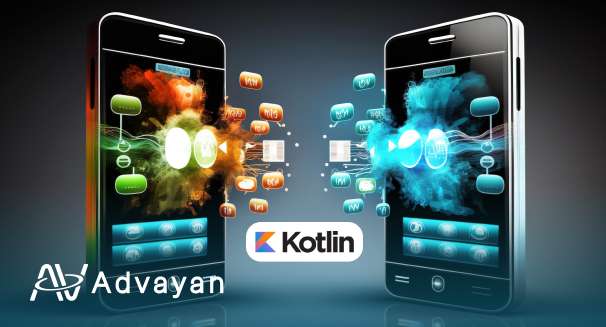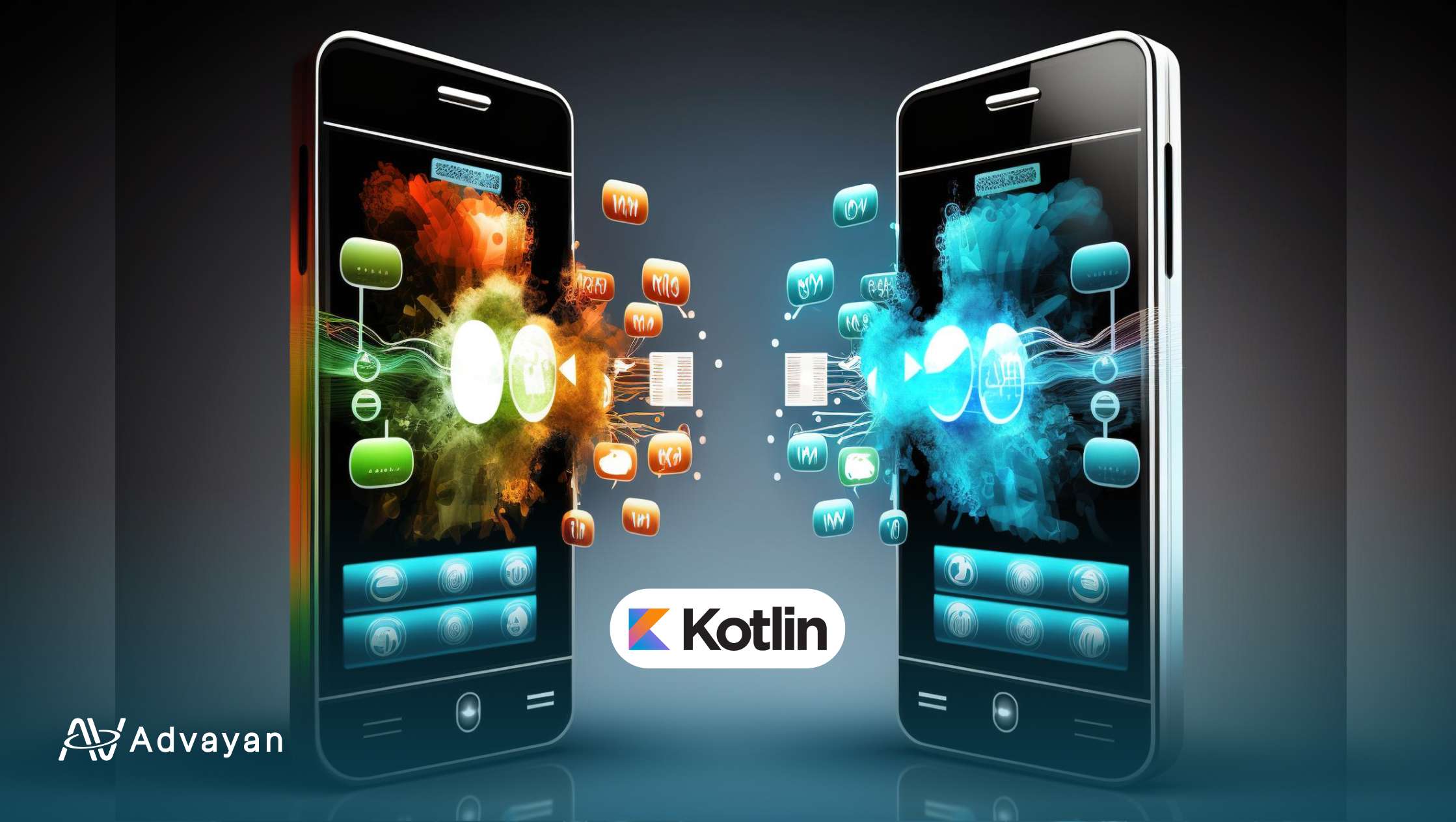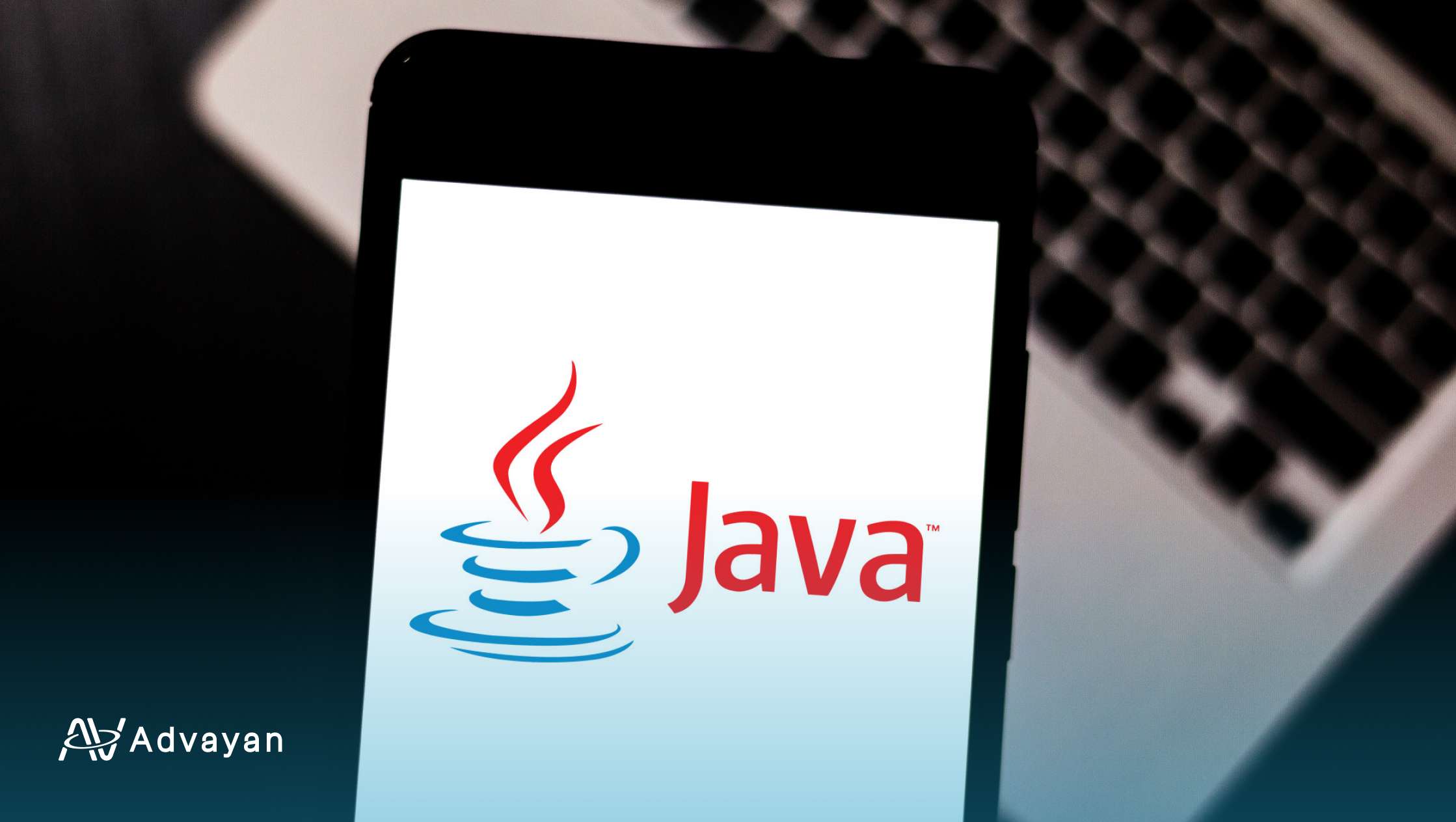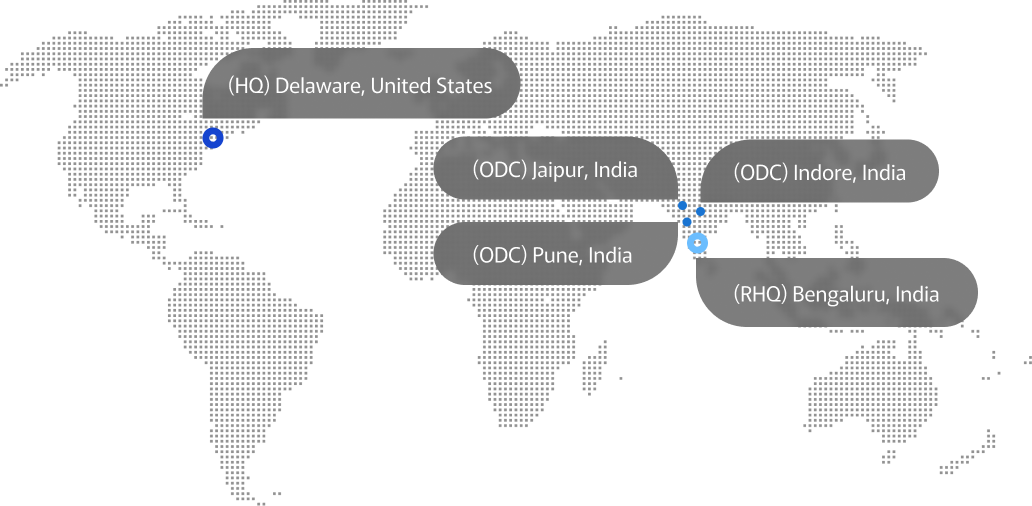
Why Kotlin is a Good Choice for Android App Development?
We live in a world marked by constant evolution, encompassing technology, lifestyle, and more. Naturally, Android development has also witnessed this evolution. Currently, the most widely used language for Android development is Kotlin. The intriguing aspect is that even Google recommends Kotlin as the ideal programming language for modern Android development, offering numerous advantages, including enhanced expressiveness, concise syntax, reduced common code errors, and seamless integration into existing apps.
Now that even Google acknowledges Kotlin as the best choice, at Advayan, we are eager to explore the reasons why Kotlin stands out as the top choice. In this blog, we will delve into the captivating world of Android app development and examine why Kotlin is an exceptional choice for developers.
Whether you’re a seasoned developer or someone entering the realm of mobile app creation, understanding Kotlin’s strengths will undoubtedly shape your approach and enhance your development experience.
Read on to find out more.
Table Of Content
- What is Kotlin for Android App Development?
- Kotlin for Android: is it time to ditch Java and learn a new language?
- What is Kotlin and why should you care?
- What difficulties to expect when migrating from Java to Kotlin?
- Conclusion
An Overview of What Android Development is?
Before we delve into the factors that make Kotlin stand out as the best language for Android development, let’s revisit the basics and understand what Android development means.
Android development, in simple terms, refers to the process of creating applications for devices running the Android operating system—an open-source mobile OS developed by Google. It finds widespread usage in smartphones, tablets, smartwatches, and other smart devices. So, the apps you interact with daily are crafted in a process known as Android development.
The Android development process involves coding in languages like Java or Kotlin, utilizing the Android Software Development Kit (SDK), and designing user interfaces through XML. Developers can create a variety of applications, ranging from games to utility apps, productivity tools, and more.
Key components of Android development include a deep understanding of the Android architecture, leveraging the SDK to build applications, integrating with various hardware features, and deploying apps to the Google Play Store.
Kotlin is More than Just a Coding Language: What is Kotlin?
Kotlin is a programming language, with over 60% of professional Android developers using it to increase productivity and development efficiency. Open-source and developed by JetBrains, Kotlin is distinguished by its expressiveness, conciseness, and easy integration with pre-existing applications.
Static typing, Java interoperability, and compact syntax—which minimizes frequent code errors—are some of its primary strengths.
Since Google I/O 2019, Android mobile development has adopted a Kotlin-first strategy, with more than 50% of professional Android developers choosing Kotlin as their primary language.
Strong Android applications may be more easily created with Kotlin’s extensive feature set, which caters to both novice and expert developers. Because of its expressiveness and Java compatibility, it’s a popular option for creating scalable, modern Android applications.
Kotlin for Android: is it Time to Ditch Java and Learn a New Language?
Is Kotlin the right choice that can be preferred over Java, the OG programming language for Android development?
Yes! It is time to bid farewell to Java and embrace a new language, none other than Kotlin.
Kotlin, with its concise syntax, enhanced readability, and seamless integration with existing Java code, has rapidly gained popularity among Android developers. Navigating through the dynamic world of mobile app development, we will uncover the compelling reasons why Kotlin is positioning itself as a formidable alternative to the traditional Java language. The merits of Kotlin may redefine your approach to crafting innovative and efficient Android applications.
Why Kotlin?
1. Conciseness: Kotlin boasts an average code length of around 20% shorter than Java, enhancing efficiency in development.
2. Performance: While Java is a mature language, Kotlin outperforms it in Android development, thanks to its concise syntax and modern features.
3. Productivity: Kotlin’s laconic nature allows developers to spend less time pondering solutions compared to Java.
4. Android Support: Kotlin offers superior support for Android development, including features like null safety and Android Extensions.
Key Components that Make Kotlin Different from other Programming Languages
Kotlin boasts key components that set it apart and makes it a superior choice compared to other programming languages. These distinguishing factors contribute to its growing popularity among developers.
1. Kotlin Syntax: Kotlin offers a concise and expressive syntax, reducing boilerplate code and enhancing code readability.
2. Interoperability with Java: Kotlin is fully interoperable with Java, allowing developers to seamlessly use existing Java code in Kotlin projects and vice versa.
3. Kotlin Data Classes: Data classes in Kotlin streamline the creation of classes for holding data, automatically generating boilerplate code like toString(), equals(), and hashCode().
4. Extension Functions: Kotlin introduces extension functions, enabling developers to add new functions to existing classes without modifying their source code.
5. Null Safety: Kotlin addresses null pointer exceptions through its built-in null safety features, making it more robust and preventing common programming errors.
6. Control Flow: Kotlin provides concise and expressive control flow structures, simplifying decision-making processes in code.
7. Functions: Functions in Kotlin are first-class citizens, supporting features like higher-order functions and lambda expressions, enhancing flexibility in coding.
8. Delegation: Kotlin supports delegation, allowing one class to delegate specific functionality to another, promoting code reuse and maintainability.
9. Smart Casts: Smart casts in Kotlin automatically cast types within certain control flow statements, reducing boilerplate casting code.
10. Collections: Kotlin provides powerful and concise collection manipulation functions, simplifying operations on lists, sets, and maps.
What Difficulties to Expect When Migrating from Java to Kotlin?
So, you’ve finally made up your mind that you’d like to switch to Kotlin from Java. The good thing is migrating from Java to Kotlin can be a relatively smooth process, but certain challenges may arise during the transition. Here are some difficulties to expect:
1. Annotation Processing Tool (APT) Compatibility: Kotlin’s Annotation Processing Tool (KAPT) may have compatibility issues, leading to challenges, especially when dealing with popular libraries that rely on APT.
2. Bug Challenges: Kotlin’s Annotation Processing Tool is considered somewhat buggy, potentially causing issues during migration. Developers might encounter challenges related to these bugs during the process.
3. Learning Curve: While Kotlin is designed to be interoperable with Java, developers may face a learning curve in adapting to Kotlin’s syntax and features. This initial adjustment could impact productivity temporarily.
4. Codebase Adjustments: Although Kotlin is highly interoperable with Java, some adjustments to the existing codebase may be necessary. Developers may need to modify certain parts of the codebase to align with Kotlin’s idioms and best practices.
5. Tooling Challenges: While the migration process has become more straightforward over time, there might still be tooling challenges depending on the complexity of the project. Ensuring that the development environment and build tools support Kotlin is crucial.
6. Potential for Syntax Errors: As with any language migration, there is a possibility of introducing syntax errors during the process. Manual intervention might be required to address and correct these errors.
Conclusion
Businesses experience a revolutionary journey when they adopt Salesforce Lightning, which is demonstrated by its modern design, streamlined user interface, and user-friendly features that increase productivity. Lightning allows for easy workspace customization by providing dynamic dashboards and drag-and-drop capability. Its responsive design makes it accessible on all platforms, encouraging mobility and productivity when working on the go. Lightning’s integration features facilitate the development of a networked ecosystem by effectively combining data and workflows. Making the switch from Advayan to Salesforce Lightning creates opportunities for a future in customer relationship management that is more flexible, effective, and cooperative. The platform delivers a dynamic solution to drive growth and success in the digital world, not only meeting but exceeding expectations.





